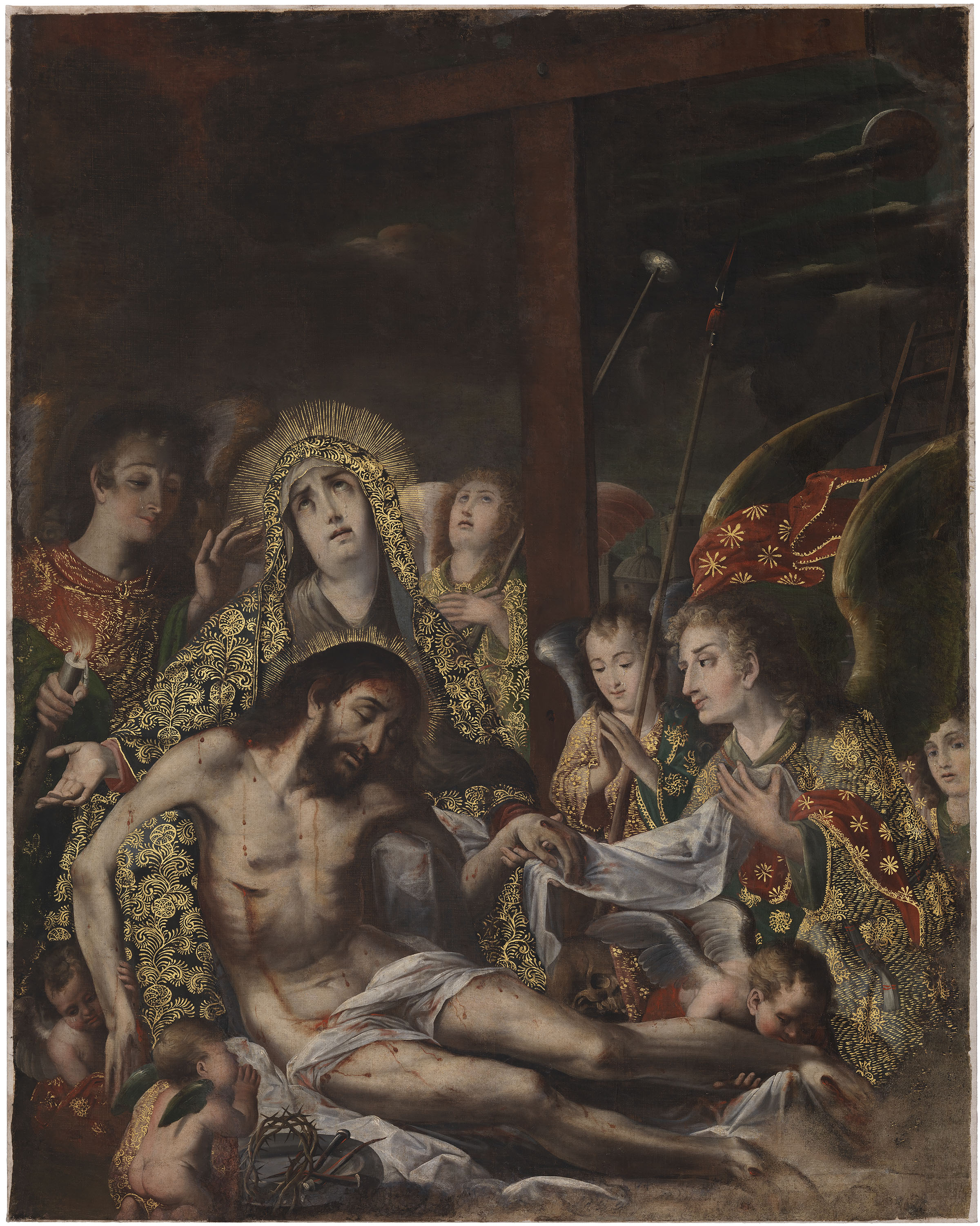A Bolivian Pietà Restored
 |
| Melchor Pérez Holguín Pietá, about 1720. LACMA |
Two summer exhibitions foreground the magic of conservators. The stolen de Kooning at the Getty is getting the most attention, but a makeover at LACMA is no less notable. In 2019 LACMA bought a spectacular if weathered Pietà by Bolivian painter Melchor Pérez Holguín (1660–1732). After a multi-year conservation treatment, the Holguín is making its debut in LACMA's "Archive of the World: Art and Imagination in Spanish America, 1500–1800" (through Oct. 30, 2022).
 |
| Before and after |
The transformation, by LACMA conservator Joseph Fronek, is the subject of two online videos, one produced by TEFAF (which helped fund the conservation), and another by LACMA.
Holguín worked in Potosí, Alto Perú, a silver-rich boomtown that became synonymous with flaunted wealth. Potosí merited a mention in Don Quixote, and Holguín is portrayed on modern Bolivia's 50 bolivianos note. Though a contemporary of Watteau, Holguín drew on mannerist and even gothic sensibilities. Two of his nicknames translate as the "El Greco of Upper Peru" and the "Golden Brush."
 |
| Melchor Pérez Holguín, Virgin of the Rosary, late 17th- to early 18th-century. Dallas Museum of Art |
 |
| Nicolas Viennot, after Anthony van Dyck, Pieta, about 1634. Fine Arts Museums of San Francisco |
The painting's gold patterning is a significant unknown. It's old, but it's not clear whether it was part of Holguín's original design.
 |
| Joaquín Caraballo, Virgin and Child with Saints Francis of Paola, John, and Roche, 1773 |
Not surprisingly, the Holguín Pieta was LACMA's first Bolivian Baroque painting. The museum now has two. "Archive of the World" pairs the Holguín with a 1773 Virgin and Child With Saints by Joaquín Caraballo. The latter's caricatural figures were understood as homages, part of a Holguín revival some 40 years after the artist's death.

Comments
https://collections.lacma.org/node/230433
I don't know if I give a pause to such works because they strike me as odd or funky, or if they to me don't seem really good enough in terms of style and composition.
The way that personal taste affects how art is judged will be ratcheted up 1,000 times when the Lucas museum opens. Or is the artwork good or is it treacle? Or is the artwork woke or is it non-woke?